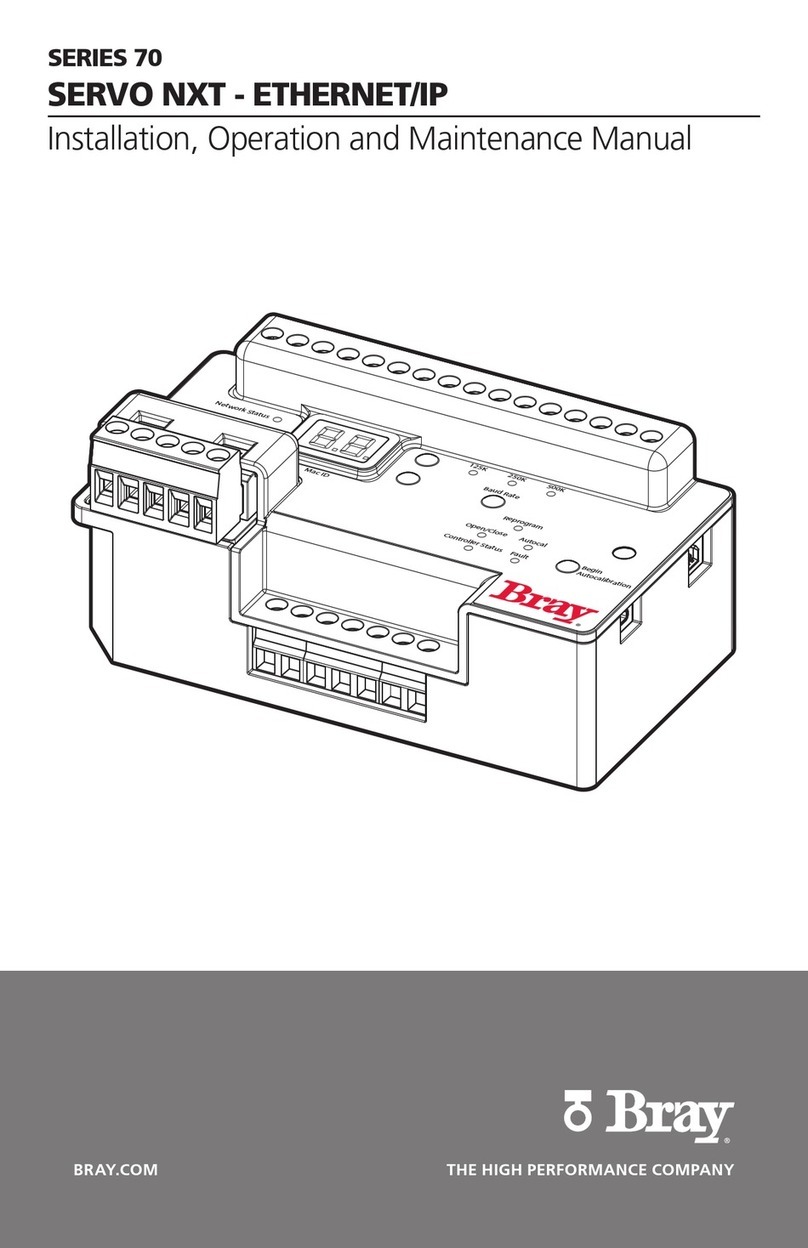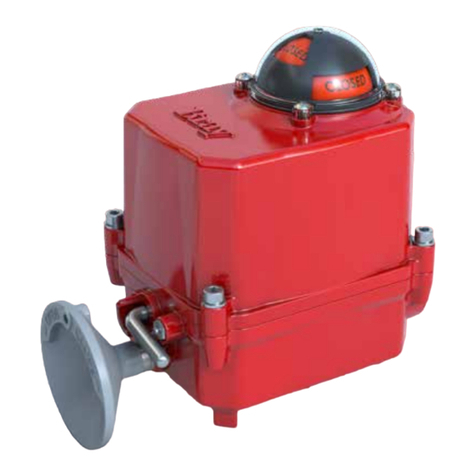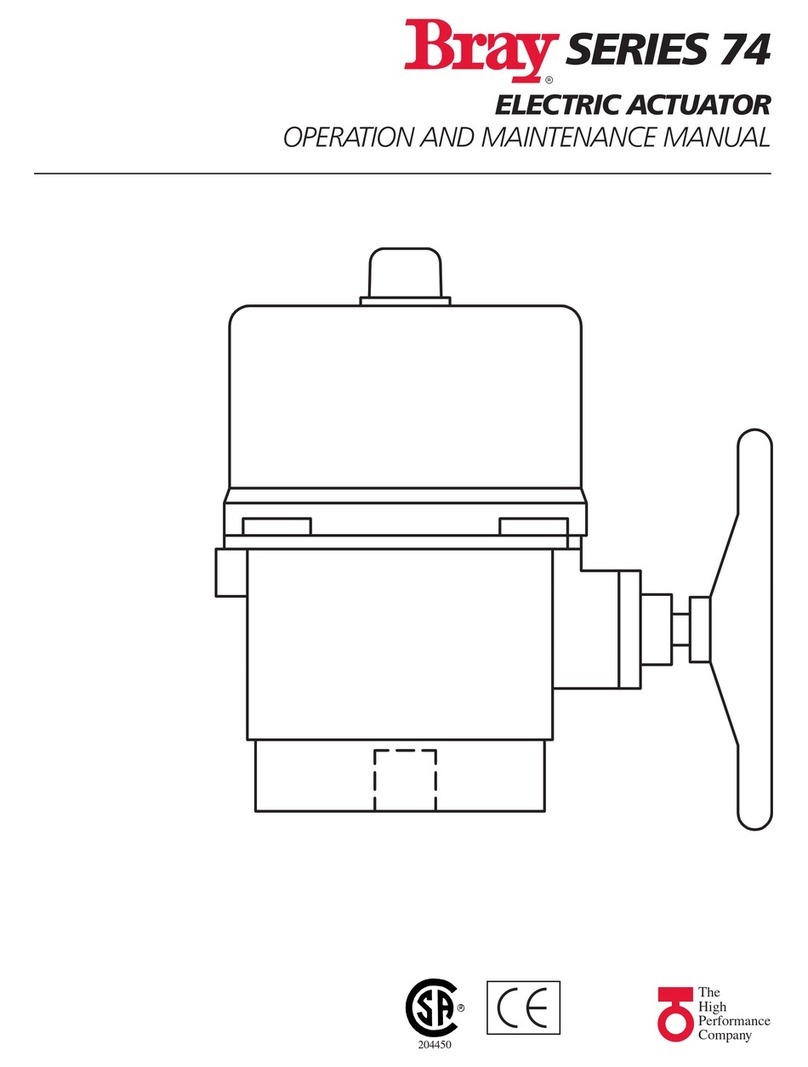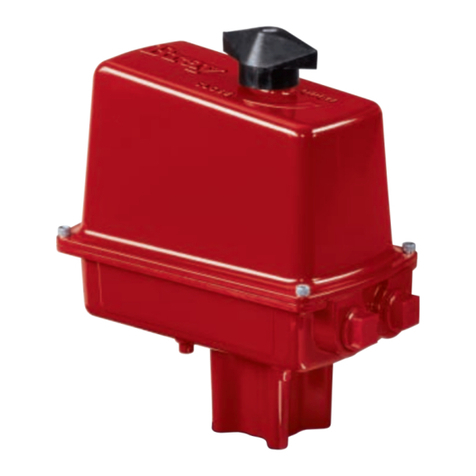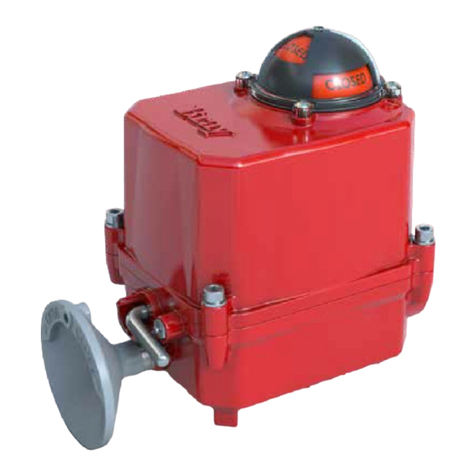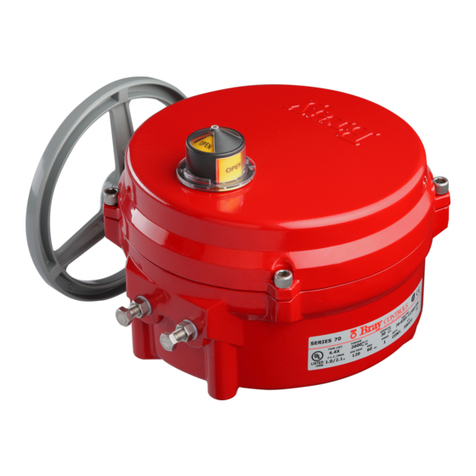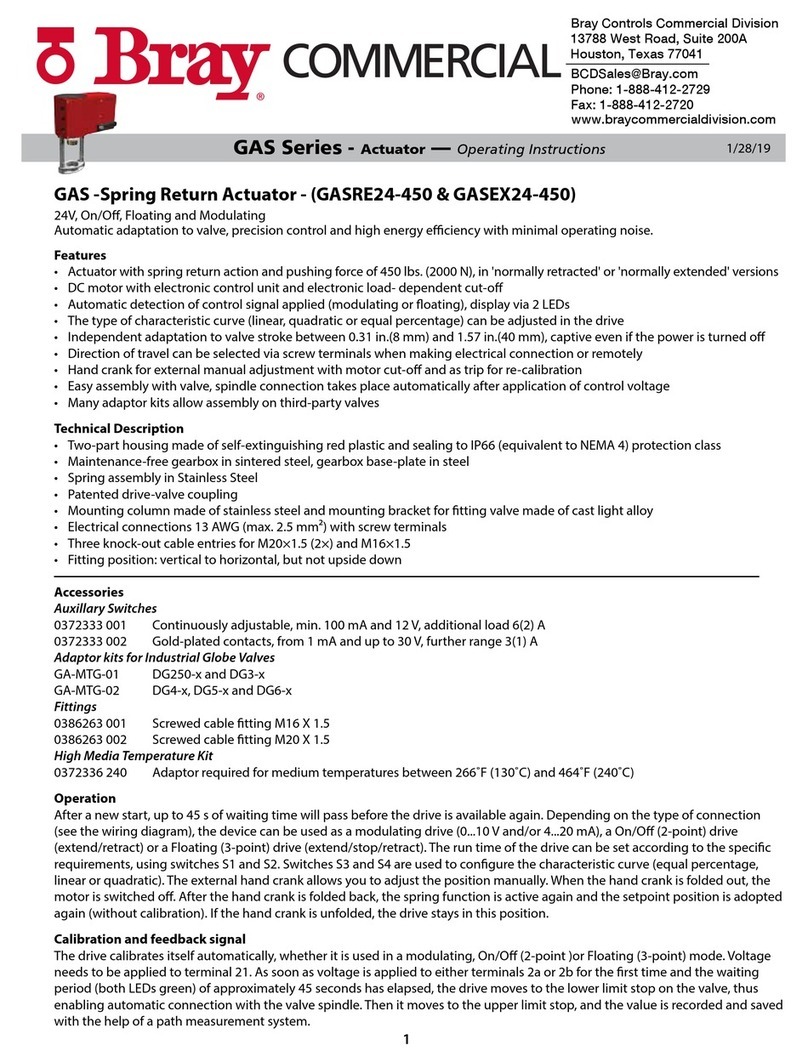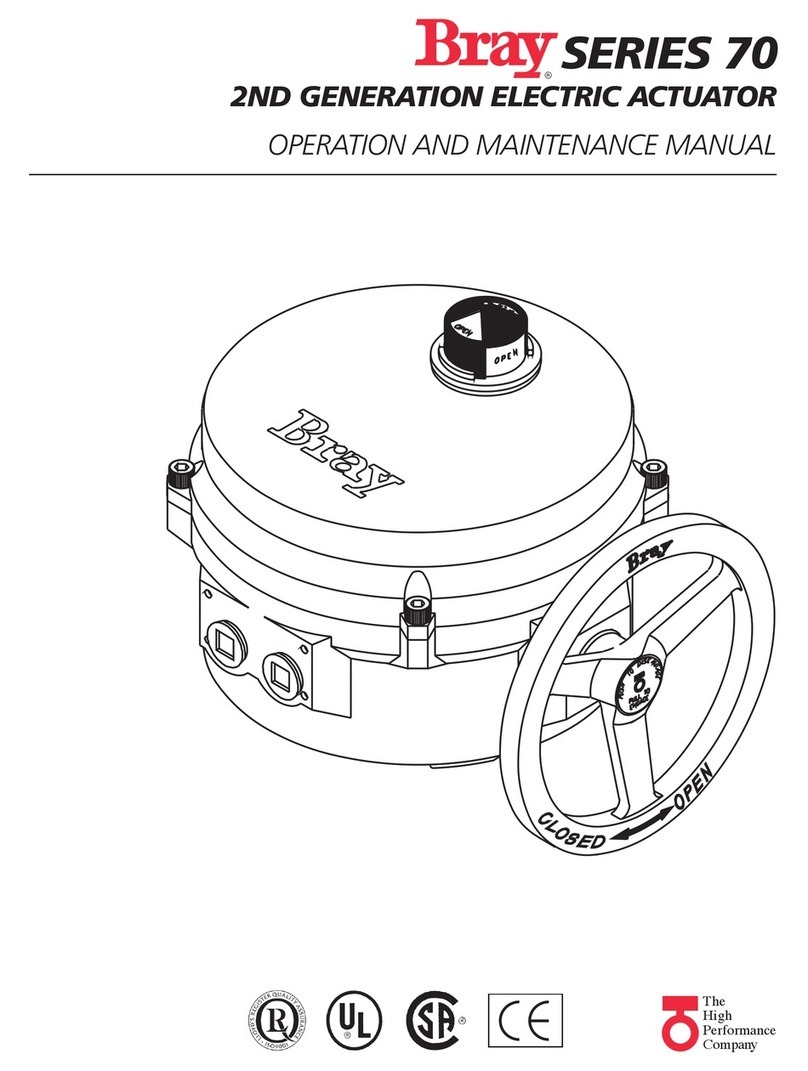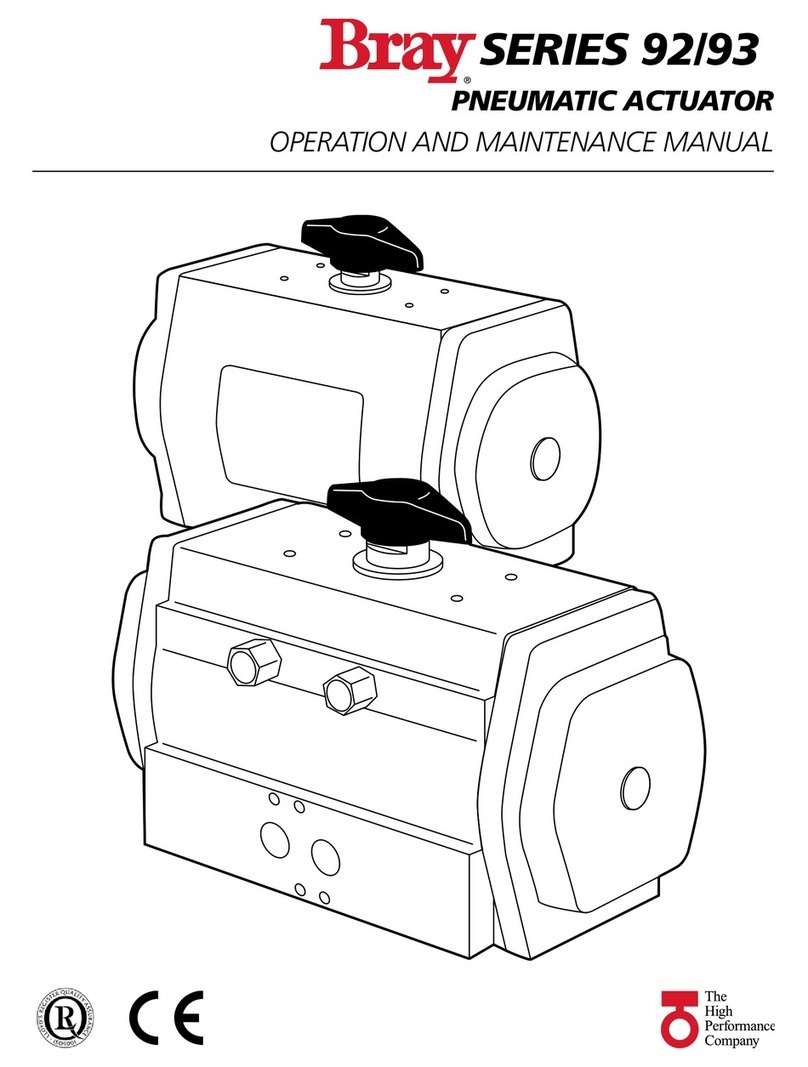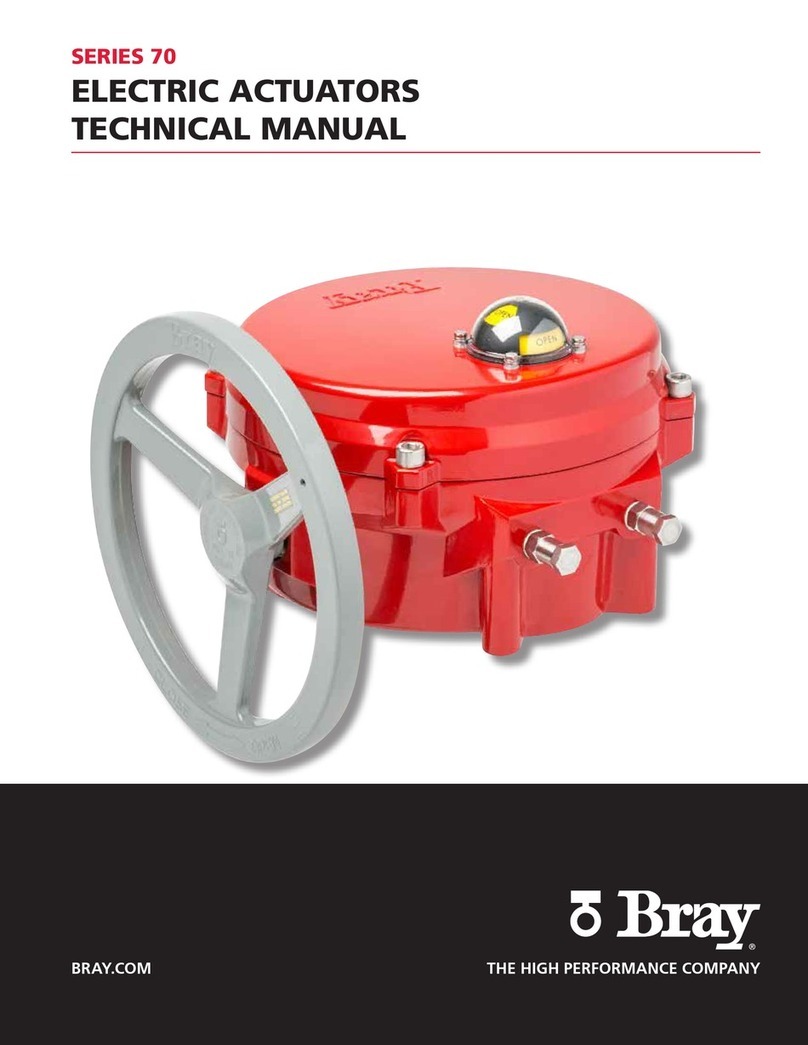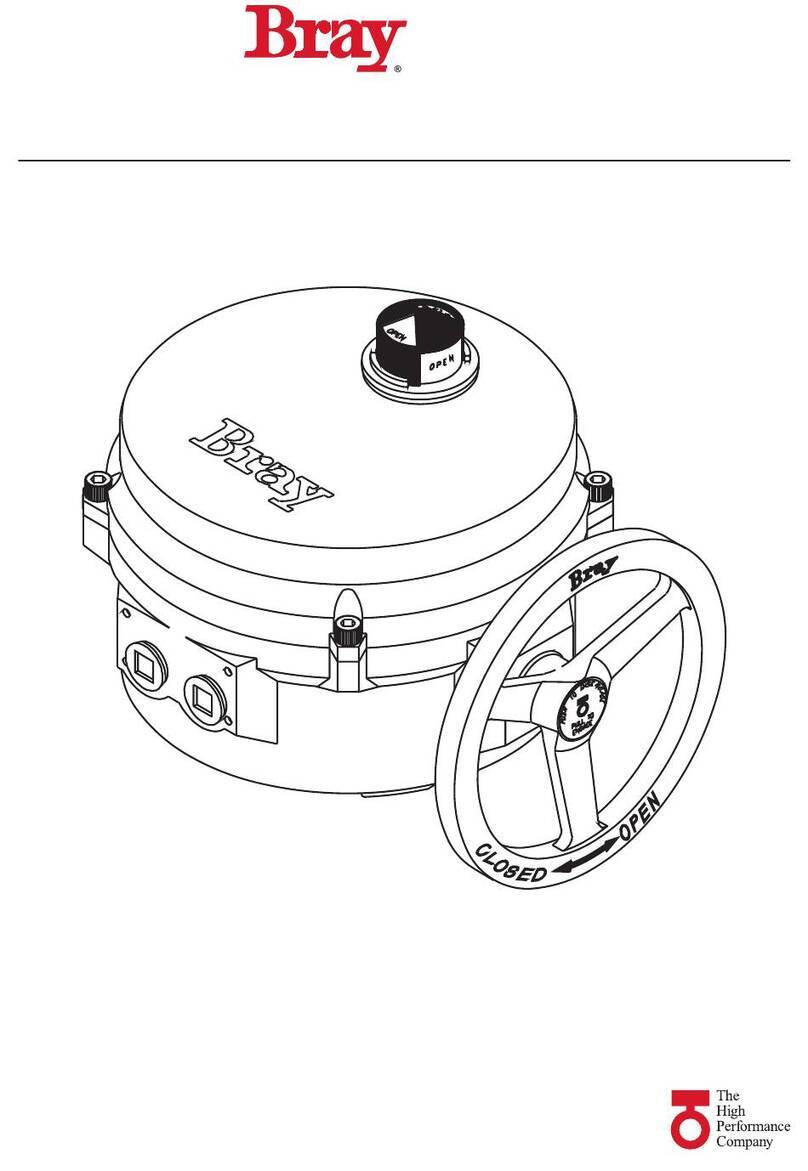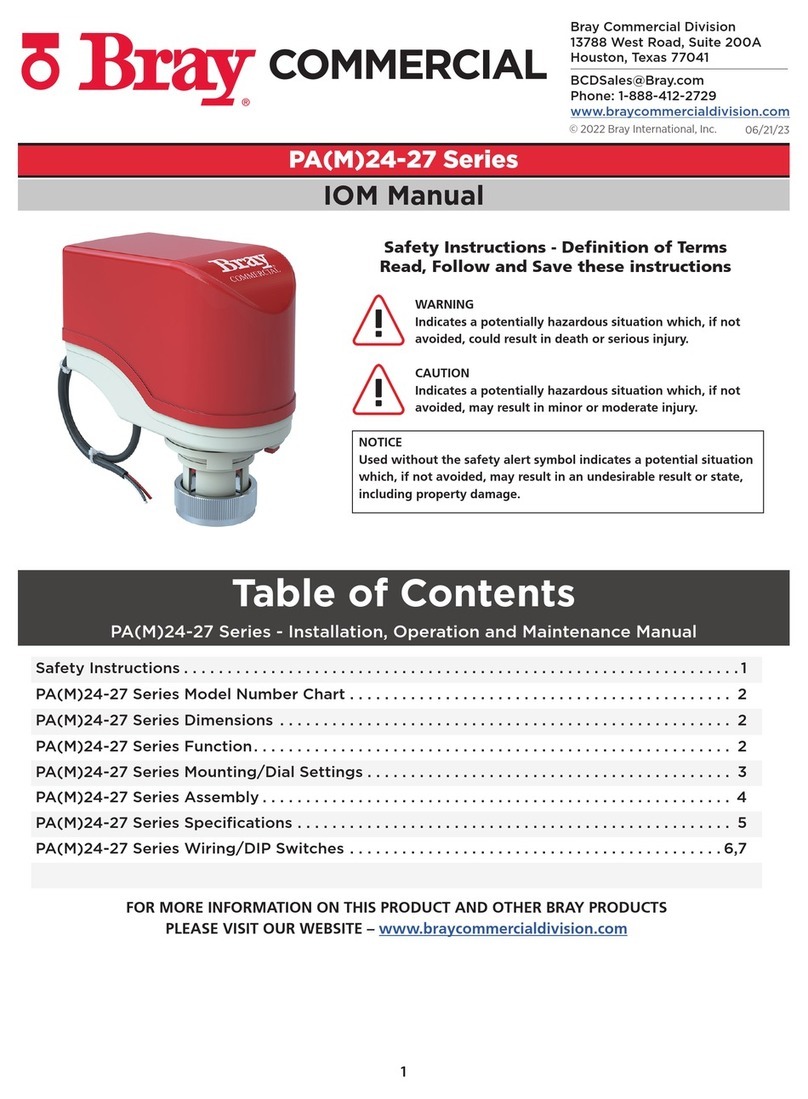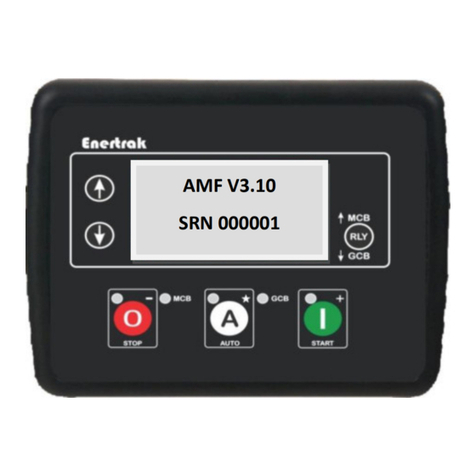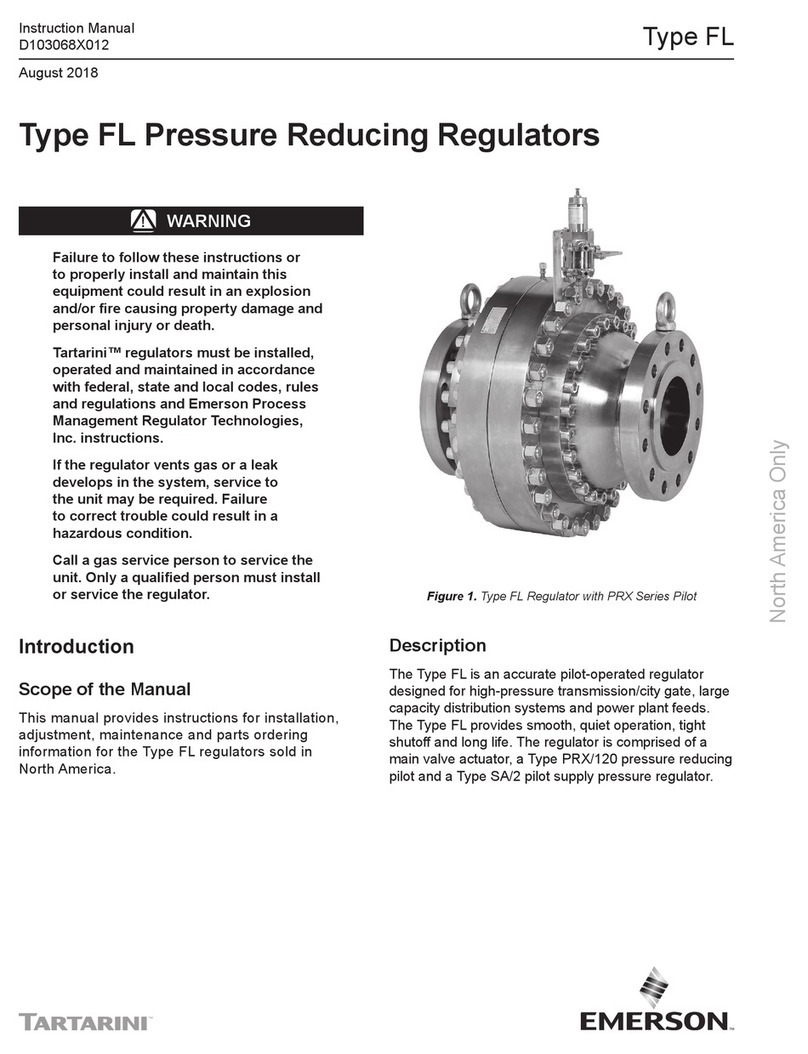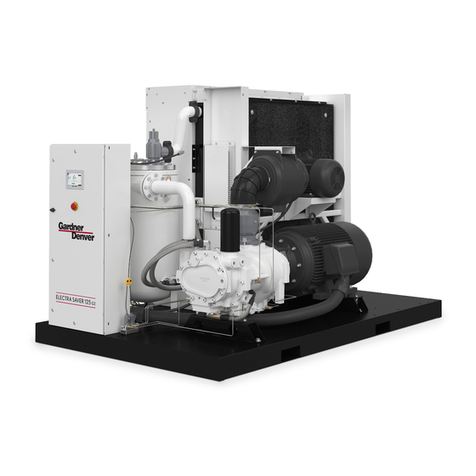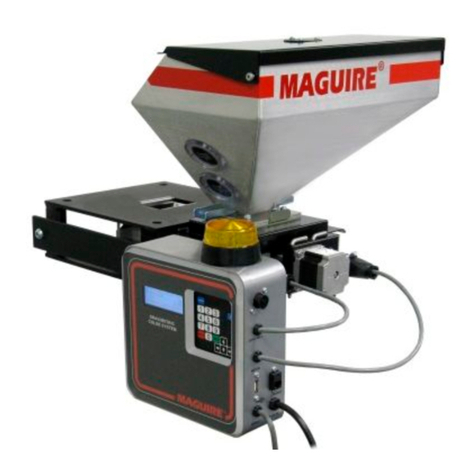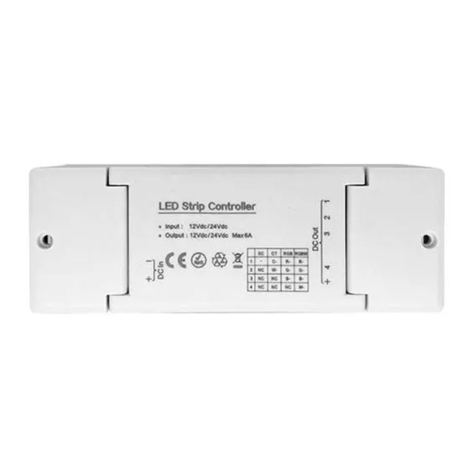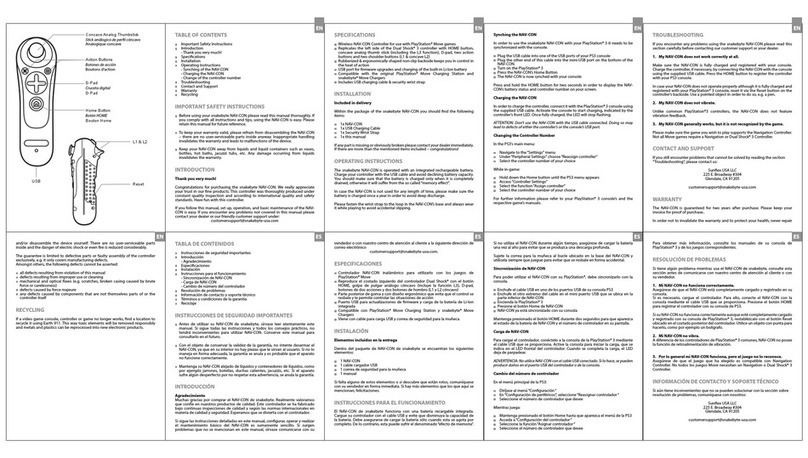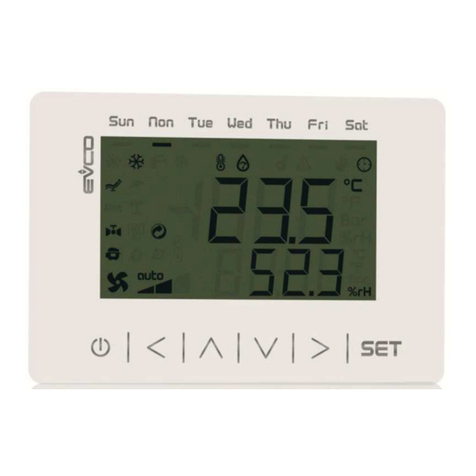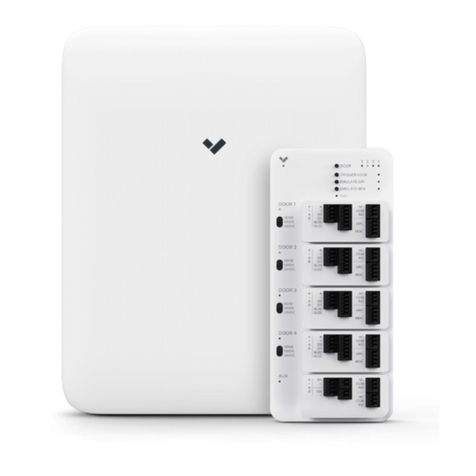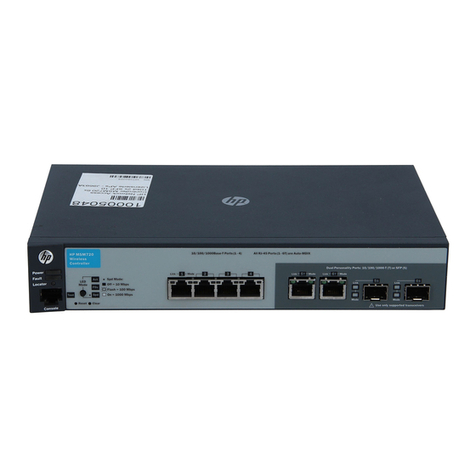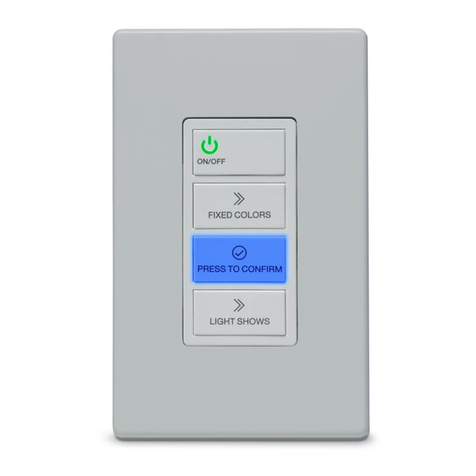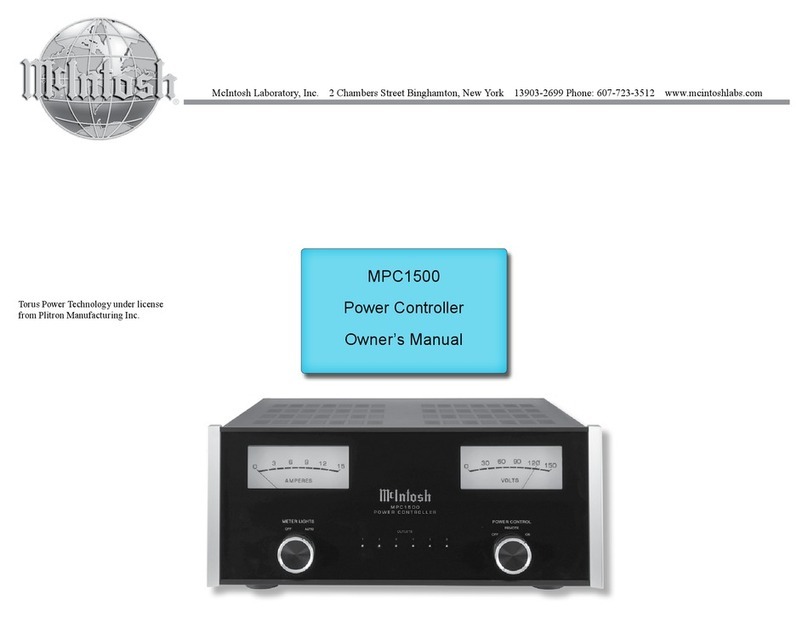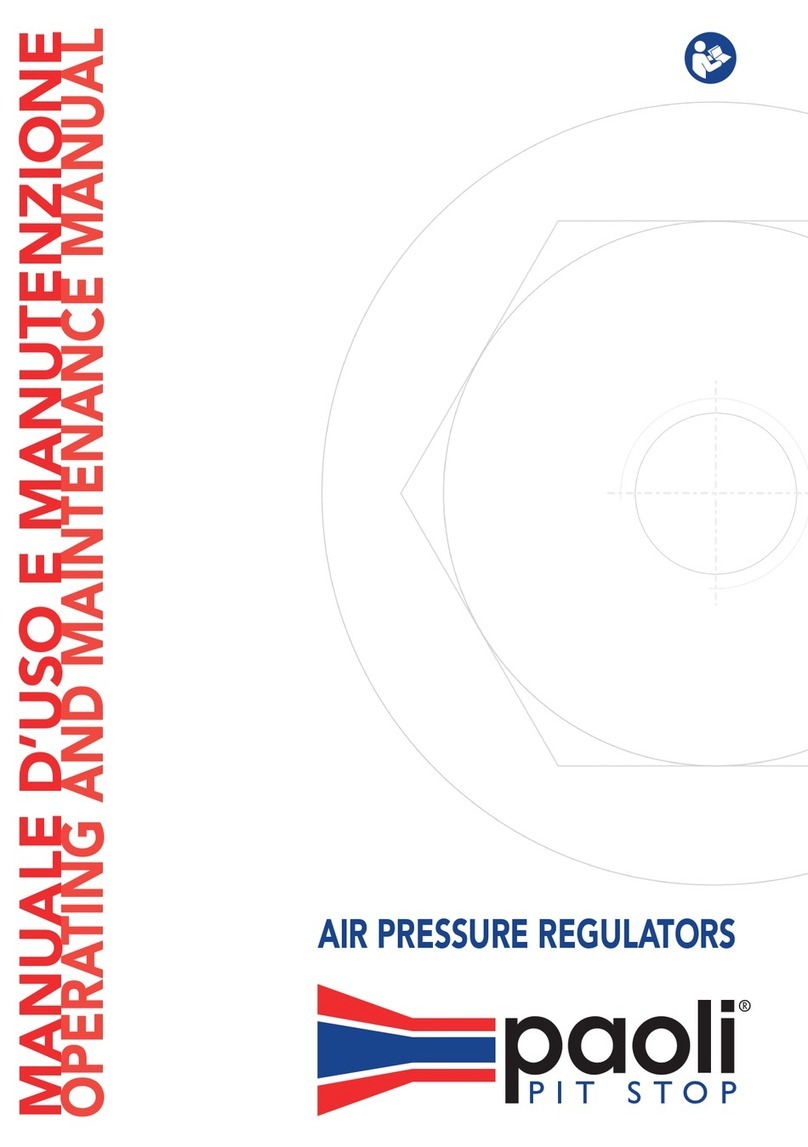
Series 98 & 98H Scotch Yoke Actuator
Installation, Operation and Maintenance Manual
© 2020 BRAY INTERNATIONAL, INC. ALL RIGHTS RESERVED. BRAY.COM The Information contained herein shall not be copied, transferred,
conveyed, or displayed in any manner that would violate its proprietary nature without the express written permission of Bray International, Inc. 6 of 84
hydraulic pressure module in the S98H, while the Torque and
Spring modules remain the same.
Two output torque characteristic profiles are available in the
form of Symmetrical Yoke and Canted Yoke.
Standard actuators have a mounting base to ISO 5211. MSS
mounting base is available as an option.
Mounting of the shaft driven accessories is per VDE 3845/
NAMUR standard.
The operating pressure range of the Series 98 Pneumatic
Actuators is 40 to 150 psig, and 500 to 3000 psig for Series
98H, depending upon the size and configuration. Refer to
the MOP (maximum operating pressure) charts or the name
plate on the actuator for the maximum operating pressure.
Operating media for S98 pneumatic shall be clean and dry
compressed air, in accordance to ISO 8573-1 Class 2.3.4
filtered to 5 microns or better, with pressure dew point
of -20°C (-4°F) or at least 10°C (18°F) below ambient
temperature.
For S98H hydraulic actuators, operating media shall be the
recommended grade of hydraulic fluid, specified to ISO 4406
class 18/16/13 maximum contamination level and flash point
> 157°C, for the standard temperature trim.
The user shall plan and implement a periodic maintenance
program to ensure the service conditions continue as
intended and the actuator is monitored and maintained per
manufacturer’s recommendations.
2.1 Storage
Bray Series 98 & 98H are not weatherproof until the unit
is properly installed, or all conduits and applicable port
connections are sealed off and prepared for storage. The
units may be shipped with temporary covers to prevent
foreign matter from entering through the conduit openings;
however, the user is responsible for replacing with the proper
sealing plugs to support its NEMA/IP ratings.
To prevent condensation from forming inside the unit,
maintain a near constant external temperature and store
indoors in a well ventilated, clean, dry room. The temperature
shall be between 40°F (4°C) and 85°F (29°C), with a relative
humidity less than 70%. Store units away from vibration
and direct sunlight exposure, and place units on a shelf or
wooden pallet in order to protect against dampness. Keep
units covered to protect against dust and dirt; if storing for
long term, placing the unit inside a plastic sealed bag may be
preferred.
Bray cannot accept responsibility for deterioration caused on-
site once the cover is removed or due to improper storage.
3.0 INSTALLATION
The S98 actuators are assembled, tested and delivered per
the configuration ordered. The mounting of the actuator
may be direct onto the valve or may require a mounting kit
that would include a bracket, coupler shaft with keys and
hardware.
WARNING
Use appropriate tackles and slings to lift the actuator.
Refer to Technical Data table for the approximate actuator
weight. The lifting lugs provided are for lifting the actuator
only and not for lifting the complete valve-actuator-
accessory assembly.
NOTICE
• Actuators do not have any built-in pressure limiting devices.
Such devices must be incorporated in the pressure supply
lines or in the hydraulic power unit as part of the controls
system.
• The user shall ensure installation in intended service
conditions and that the actuator is not covered with
dirt/dust or other substances that may affect any heat
dissipation capability, resulting in exceeding the maximum
temperature rating of the actuator.
• To prolong actuator seal life use only permitted media of
recommended quality.
• The actuator shall not be installed in hazardous areas
incompatible with the defined gas groups and temperature
class.
• When using manual override sandwich gearbox, ensure the
gearbox has over travel at least equal to that of the actuator.
• The actuators can be mounted on valves in different
positions, but care shall be taken to reorient suitably, some
accessories like filter regulation units, hydraulic override
power pack reservoirs, etc. that are gravity dependent for
functioning.
• For extended temperature range service, please refer
to the Special Requirements under Appendix to prepare
the actuator, before proceeding with the below steps on
installation.
Before proceeding with installation, check compatibility of
the valve stem to the actuator bore. The length, size and
configurations (keyways / double D / square) must match.
Additionally, check compatibility of valve and actuator bolting
pattern. If using a mounting kit, physically check the coupler
to ensure it fits the actuator bore and the valve stem.
1. Ensure the pressure module is depressurized completely
by venting the ports of S98 pneumatic actuator to
atmosphere and any power sources to accessories are
disconnected. The S98H hydraulic actuator's cylinder
ports shall be vented into the oil reservoir, through the
direction control valve, in its de-energized state.
2. Ensure the valve and actuator are aligned to the same
position (i.e., valve closed - actuator closed or both in
open). For spring return actuators, align the valve to the




















